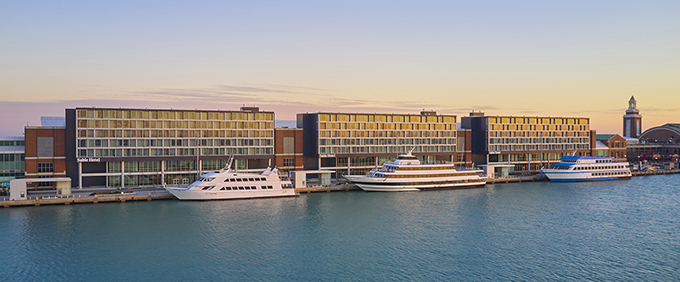Project of the Year Feature – New Construction – Chicago/Suburbs (Below $20M)
January 10, 2024
BURR RIDGE – CISCO’s 3rd Project of the Year Feature is the top choice of New Construction – Chicago/Suburbs (Below $20M), which is Rusu-McCartin Boys & Girls Club of Chicago. General contractor was BEAR Construction; client was Boys and Girls Clubs of Chicago
When considering submissions, judging criteria is based on: quality of construction, design, impact on the community and safety record.
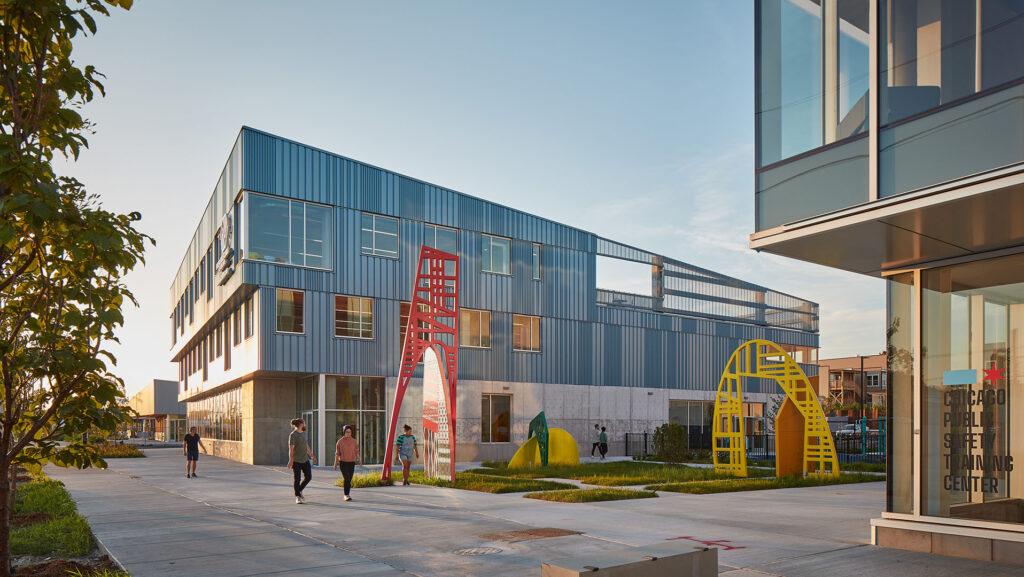
The Rusu-McCartin Boys and Girls Club of Chicago (BGCC) project was conceived and constructed during the early phase of the pandemic, which limited material availability and the construction systems that could be procured in a timely manner. Conventional structural steel framing, long span steel beams and precast insulated concrete structural walls were ruled out, leaving cast in place concrete as the preferred structural system.
Large spans over gymnasiums are normally not considered in concrete, but in this case the design team developed an efficient array of post tensioned tapered concrete beams to elegantly span the gym to support the green roof and terrace above. The concrete structure enabled minimal use of more expensive finished construction materials as the structural finishes for the core walls, ceilings and columns were left exposed throughout. The concrete floors in the entire project were polished to levels 1 and 3 and sealed for a long-lasting and low-maintenance finish. The concrete structure also resulted in a thinner floor profile, increasing ceiling heights and creating more spacious youth friendly environments throughout the building.
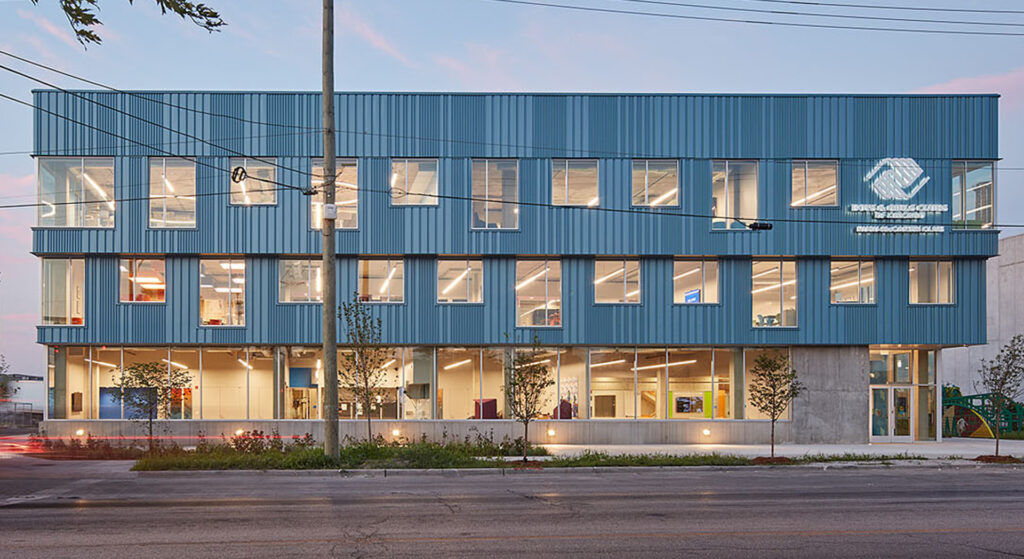
Metal Wrap panels, a top eco solution, were used to clad the building enclosure with an efficient and carbon conscious material. Since a concrete structure was dictated by pandemic constraints, this cladding system was used to insulate the rainscreen façade. All the materials used in this project focused on resiliency to ensure the building would have limited maintenance/replacement costs for at least 60 years. Structurally exposed concrete finishes are featured throughout, and except for the wood gymnasium floor, there are no manufactured flooring products used in the project.
Regarding WELL standards, the building is a closed system with high Merv filtration to ensure high quality air for occupants; utilizes local filters in the bottle filling stations and the green roof is designed with robust local species to thrive on rainwater. A teaching kitchen demonstrates the value of nutrition and provides vital lessons in life skills. The programmatic design focuses on using natural light along with LEDs/motion sensors to ensure natural light can be used during most operating hours. As fitness and mental well-being are key BGCC program concepts, the design of the building reinforces physical activity – from the gym that lets kids participate in life changing physical activities in a safe and inclusive space to the easy-access physical activity of walking the stairs between floors or to the roof deck. A child-safe outdoor playground adds to the options for fun, physical activity.
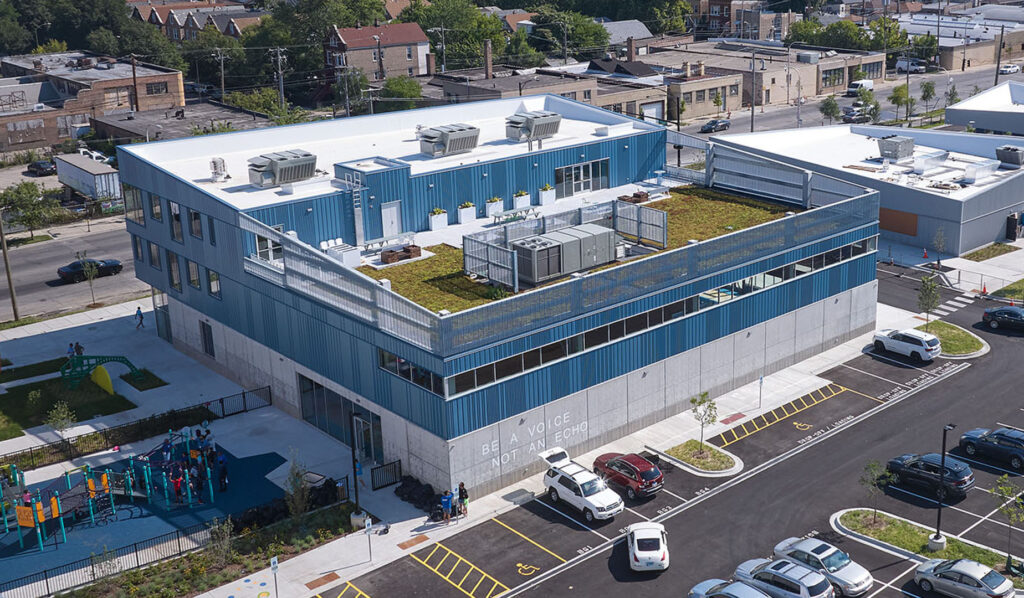
The indoor spaces are designed to be thermally and acoustically stable so that the users can focus on their activities without distraction, and the design of each floor incorporates break out and comfort spaces for the kids to relax and hang out with one another outside of the programed activities. Many spaces are designed to be used for multifunctional purposes, seamlessly blending into the circulation zones and ensuring that the vitality of the programing is always part of the entire building.
Latent Design and BEAR worked closely with the BGCC youth council to provide tours during several stages of construction, providing a learning experience for future club members and students. These tours not only showcased the construction activities, but more importantly exposed the youth to A/E/C career paths. Katherine Darnstadt, Founding Principal of Latent Design, shared what female minority leadership in the design profession can be. During these construction tours, Chicago Alderman Emma Mitts spoke of developing a renewed sense of pride and hope in their neighborhood that would be advanced with this project.
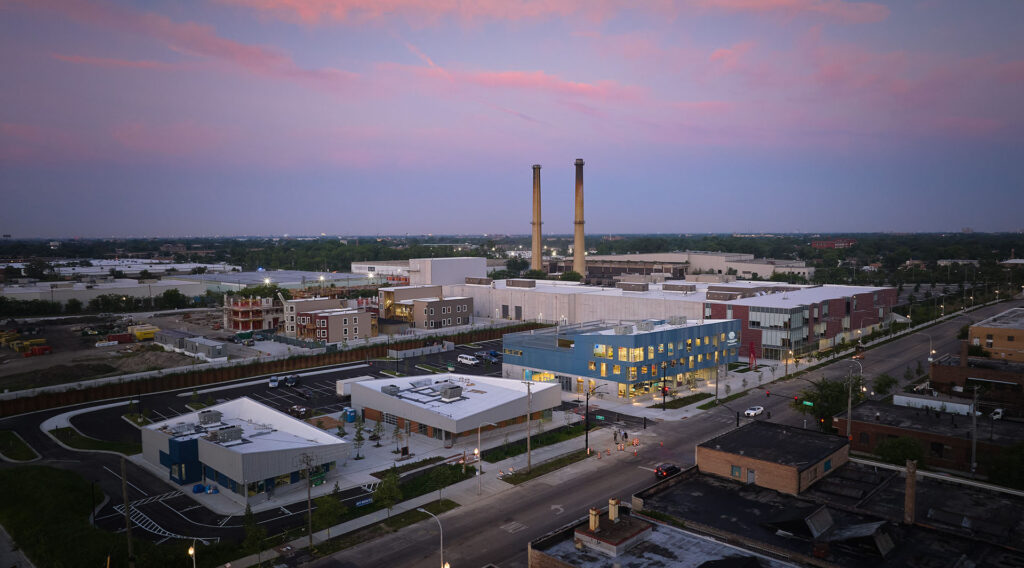
Alderman Mitts was an instrumental partner through the life of the project, as were members of the newly built Joint Public Safety Training Center, located on the campus. A main BGCC driver to selecting the site was its proximity to the new Public Safety facility, providing the opportunity for daily interaction between the Chicago PD/FD with the neighborhood kids and parents to build trust and communication between the groups at a truly grass roots level.
From site selection and precon through final design, there was a strong initiative to define the needs of the Austin neighborhood with each step, and every decision was filtered with those parameters in mind. Resources, budget and community needs were analyzed through a participatory approach that leveraged local assets to directly generate project opportunities. Through several community outreach events coordinated by Alderman Mitts and attended by local organizers, BEAR and its project partners, community members were genuinely involved in the planning and execution of the project. These partnerships allowed the project to far exceed the City of Chicago MBE/WBE hiring goals as well as local area resident hiring requirements. Importantly, over 10,000 labor hours, or just under 20% of the total project’s hours, were performed by residents of the Austin neighborhood and immediately adjacent City wards.
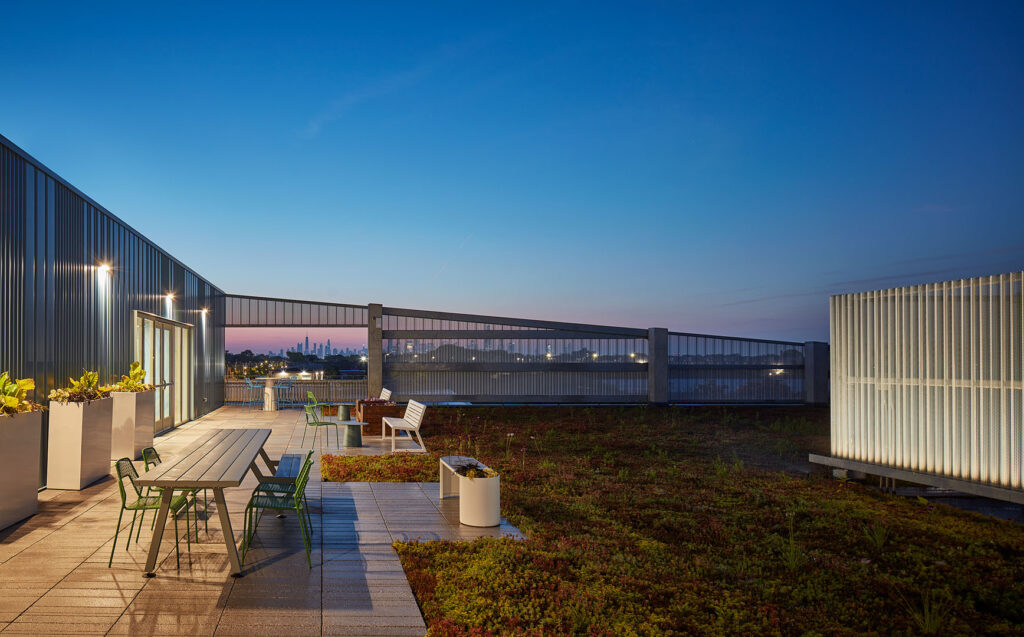
“Not only does the Rusu-McCartin Boys & Girls Club provide a safe and educational space for West Side youth, but it is also a place for relationship-building, listening and collaboration. We are deliberately choosing to no longer be bound by the barriers that divide us. This Club is a shining example of how bold ideas can shape our shared future,” 37th Ward Alderwoman Emma Mitts said.
The Rusu-McCartin Boys and Girls Clubs of Chicago Club is designed to take advantage of northern natural light with a 50 percent window-to-wall ratio on the northern façade where the functional programmatic elements take place. Visual connections to the outside are designed into the main east to west spine circulation of the building where windows provide light and visual relationships to the other on-campus projects and the Chicago skyline.
Understanding the main circulation though the building would utilize the stairwells, a vibrant orange stair railing leads the students up to their private and safe rooftop recreation area and outdoor classroom. Skylights over each stairwell provide natural light, making the typically utilitarian stairs into an integrated part of the overall building design.
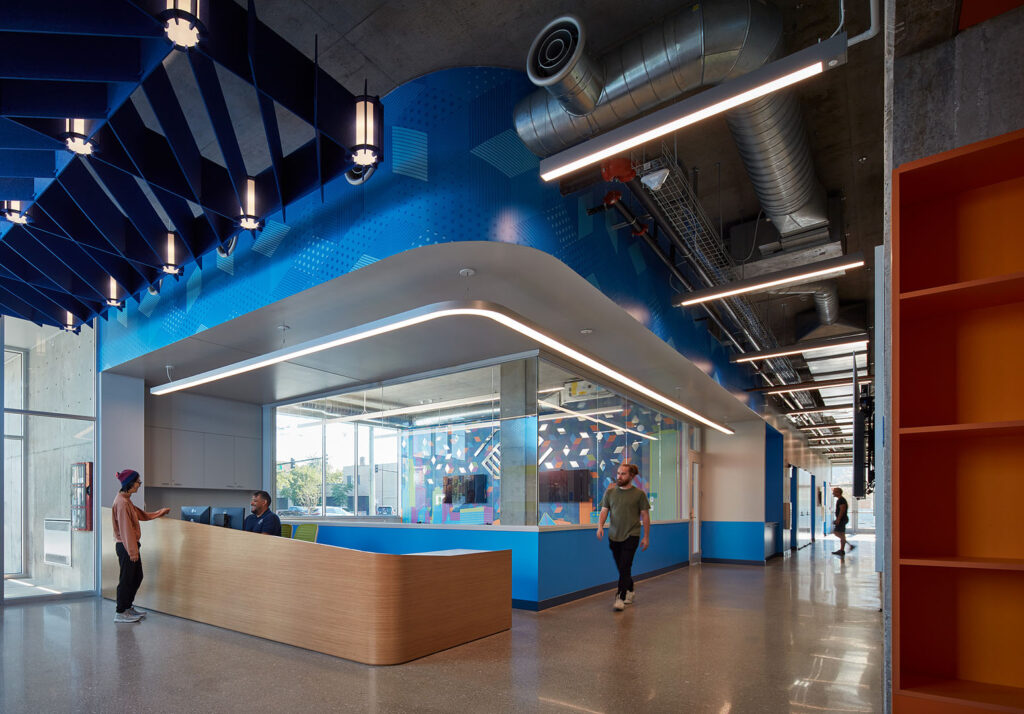
The outdoor public courtyard creates a natural dialogue between students and the first responders who share the campus, creating daily opportunities to build trust and friendships. Transparency on the ground floor connecting the community to the dining area, game room, music lab and entry functions fosters a sense of pride and renewed sense of place requested by the community.
Even the Club itself promotes BGCC’s mission to provide access to positive opportunities in the form of educational experiences. There are hands-on programmatic spaces such as an advanced robotics lab, a teaching kitchen and a music lab for the kids to interact. More than that, the IT closet was designed to be a kid-friendly viewing experience with a window and brightly lit displays.
“We know how important it is for Chicago’s youth to have access to safe and enriching environments in their neighborhood . . . we have come together to create a truly transformational space for our children and teens,” said BGCC President and CEO Michael Crowley
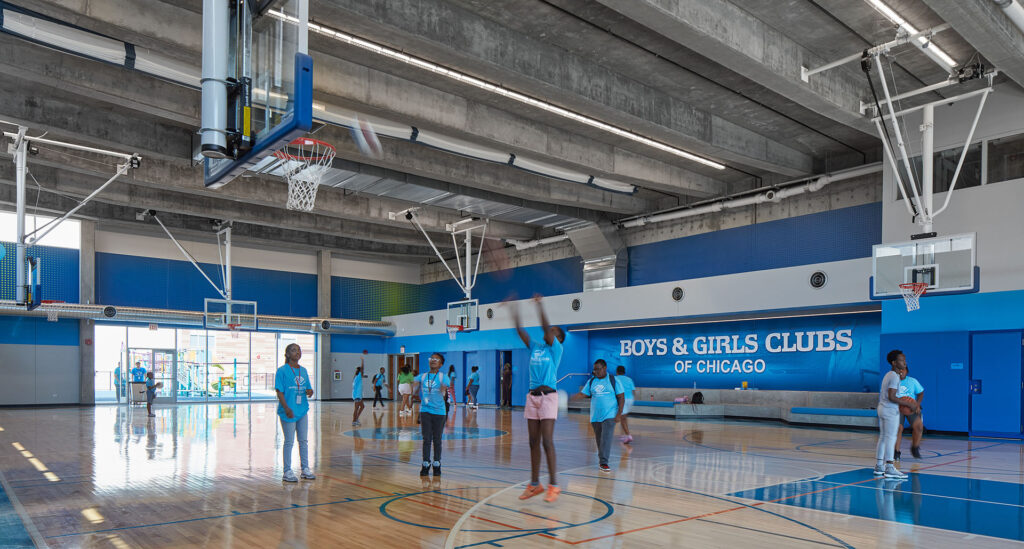
Throughout the preconstruction and value engineering process, BEAR worked closely with its trade partners to ensure the viability of delivering the project within the aggressive schedule required as well as tight budget constraints. To ensure strict adherence with the project design and client’s program needs, BEAR and its trade partners participated in a full gamut of 3D BIM coordination of all the building systems and components. Utilizing Procore’s construction management software, Latent and BEAR worked closely together daily for the coordination of submittals, shop drawings and RFI’s to ensure a seamless construction process.
Throughout construction, BEAR met with trade partners on site and conducted coordination meetings, pull planning sessions and enacted other lean construction practices that drove the success of the project. For project closeout, BEAR worked closely with BGCC and its staff regarding building system commissioning and conducted multiple end-user training sessions to ensure a smooth building operation from the very first day of public use.
There are a few notable achievements regarding the above and beyond nature of teamwork on this project. First, LEED Silver certification for the project was achieved despite the goal never being included in the original specifications. The project was built on a shared campus with two other projects being concurrently built by different contractors. Despite adding logistical and coordination challenges, all projects were successfully completed with a sense of camaraderie and respect. Lastly, the successful coordination between BEAR and its trade partners to fundraise and negotiate reduced pricing and material donations rose to championship levels and directly contributed to delivering the project within budget.
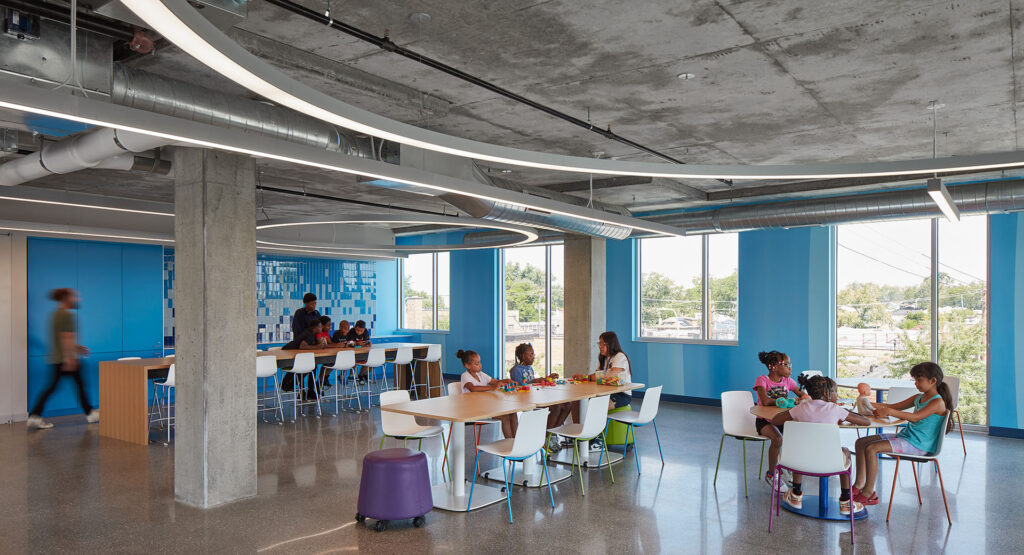
BEAR believes in a ‘SAFETY FIRST – SAFETY ALWAYS’ approach to the construction process. We maintain a superior safety program compliant with all OSHA and industry standard safety regulations. Projects are audited on a regular basis by a third-party safety evaluation service and reports are distributed to all team members. During the run of this project, BEAR utilized the services of Assurance Agency to perform regular safety audits to secure the safety of the project and surrounding community.
As a standard operating procedure, BEAR provides project and task specific instruction to ensure that all project stakeholders have the proper tools, training and knowledge in place to ensure we meet all standards and provide the safest working environment possible. Demonstrating the success of this approach, there were zero recordable incidents with over 50,000 labor hours worked on the project.

